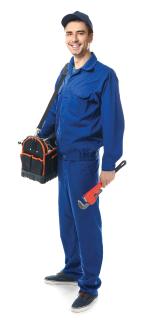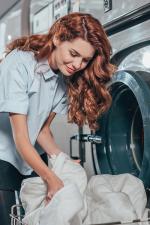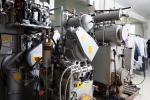CHICAGO — Adding or replacing equipment to a drycleaning store or plant can be a massive undertaking, but by planning head and asking the right questions, cleaners can smooth the path and quickly put the machines to work for the company.
In Part 1 of this series, we looked at questions cleaners should ask manufacturers, along with steps they can take to ensure as smooth an installation as possible. Today, we’ll examine steps cleaners should take to make sure their staff is ready for the change.
The Human Element
Of course, a new machine is only of benefit if the people operating it know how to take advantage of everything it offers — and are willing to learn potentially new ways to accomplish their tasks.
“I definitely believe in getting the employees involved in the planning process,” says Matt Lipman, sales representative for Union Drycleaning Products, “because if you do, they’re part of the process. They’re likely to get more excited and be more cooperative. The other thing I believe is that it’s important to train the employees on the new equipment as the equipment is being started for the first time. You could break any bad habits they have, and the owner will truly get a return on their investment. They can then reap the full benefits.”
Getting buy-in from staff is critical for the smooth adaptation of new equipment, agrees Wesley Nelson, president of Sankosha USA.
“I think that’s really important to get the managers and also the operators involved in the purchase process,” he says. “We see a much higher acceptance rate of new equipment when owners decide to bring in the operators early on. They feel like they’re being involved and are being respected. The alternative to that is just to have a new piece of equipment show up on Monday morning and them being told to use it. When that happens, the piece of equipment is perfectly fine, but they weren’t involved, so they could hesitate to accept it.”
Part of this early process involves answering the specific questions cleaners and their staffs have about equipment. Sankosha has a Chicago-area showroom where a potential buyer and their staff can actually operate the equipment they are considering.
“A lot of times, we encourage people to bring in their own garments,” he says. “We have garments set up in our showroom — they’re what we think should be put on the machines — but people have different customers and different types of garments that they need to press. It’s good to bring in your own stuff and try it on the piece of equipment, just to make sure that you would be happy with it.”
Once the equipment is set up in the cleaner’s facility, it’s time for hands-on training.
“We’ll go over basic training — how the equipment works, teach the operator what all the buttons do, and go through some garments,” Nelson says. “Then, after two or three days, when they’ve had time to use the equipment, we’ll do some follow-up. They’ll have more questions or comments. On the very first day, it’s hard to go through everything and get them up to speed. So, usually it’s a two-stage process, giving them time to use it and come up with their own constructive questions. That usually goes a long way to long-term satisfaction with the units.”
Working Together
It’s important to take a holistic view of the drycleaning facility, Lipman says, and not just look at a new piece of equipment on its own.
“I always like to ask clients, ‘What are we solving?’” he says, “and then, ‘Are we going to create another problem?’ In other words, if they double the size of the drycleaning machine, for example, but they don’t have the ability to press (for) it, are they going to create another problem instead of solving a problem?”
It’s important to realize that every piece of equipment in a plant connects to everything else.
“You have to look at the entire picture,” Lipman says. “If the new machine creates a bottleneck somewhere, then that’s probably something they need to look at, as the new machines are supposed to integrate and make your process better and smoother.”
Nelson adds that where cleaners decide to physically place their new equipment is a critical decision.
“Let’s say you’re getting only a legger, and you already have a topper,” he says. “Make sure that the layout works well with the new equipment. If you’re getting a whole new station, work carefully on that layout to make sure that the workflow is there, that you have the machines on the correct side of each other. Look at the overall layout — not only that station, but how it fits in with the rest of the plant’s workflow.”
Come back Thursday for the conclusion of this series, where we’ll explore how best to take care of new equipment and make sure it’s being put to its best use. For Part 1 of this series, click HERE.
Have a question or comment? E-mail our editor Dave Davis at [email protected].





















